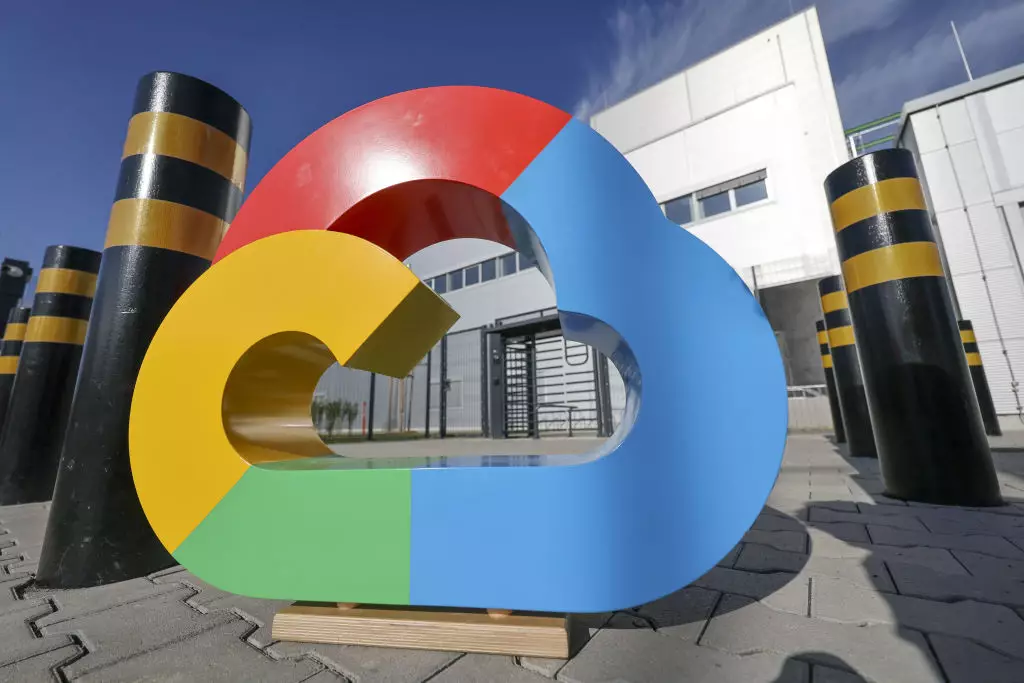Despite being a formidable player in the cloud industry, Google Cloud has long struggled to dominate the market share carved out by giants like Amazon Web Services (AWS) and Microsoft Azure. However, recent strategic moves suggest a pivot that could redefine its standing. Google’s recent partnership with burgeoning AI startups such as Lovable and Windsurf reveals a keen focus on fostering innovation and cultivating an ecosystem that can propel Google Cloud into the forefront of AI-driven cloud solutions. Unlike more established players, Google’s emphasis appears to be on leveraging its technological prowess to carve out a niche among early-stage AI companies—an approach that could reshape its market trajectory.
This expansion approach exposes a nuanced shift: instead of solely competing on scale, Google Cloud is positioning itself as a nurturing ground for disruptive AI technologies. Such a strategy is inherently risky, given the low revenues from these startups relative to the giants, but it also holds unparalleled potential. Incubating cutting-edge AI startups benefits Google not just through immediate revenue but through ecosystem dominance and future market share. By actively courting startups at this nascent stage, Google builds an ecosystem that could, over time, eclipse more entrenched competitors’ offerings through innovation and agility.
Innovation as a Catalyst for Growth Amidst Market Saturation
Google Cloud’s push into AI startups is driven by its recognition that the AI revolution is not merely a trend but a fundamental shift in computing paradigms. The fact that it now works with nine out of ten leading AI labs—including OpenAI and Safe Superintelligence—is testament to its strategic intent. These partnerships serve multiple purposes: they accelerate AI innovation on Google’s infrastructure, help justify the substantial costs associated with training and deploying models, and provide a competitive edge in the rapidly evolving AI arms race.
Much of Google’s recent momentum derives from its ability to attract startups with attractive incentives—$350,000 in cloud credits through the Google for Startups Cloud Program is a game-changer for early-stage ventures. This approach effectively lowers the barriers to entry for startups that would otherwise be priced out of high-performance cloud computing, especially those working with expensive AI hardware like Nvidia GPUs. While Lovable and Windsurf might currently have modest revenues, their potential future growth is what makes them strategic bets. It’s about planting seeds now to harvest future dominance, fostering a dedicated AI community that views Google Cloud as the platform of choice.
Strategic Challenges and Financial Outlook
While Google’s outbound investments and partnerships are promising, they are not without substantial hurdles. The expense involved in training, fine-tuning, and running large AI models is staggering. This cost barrier makes cloud providers’ offerings more than just infrastructure—they are inextricably linked to the economics of AI development. Google, therefore, must balance its generous incentives with the sustainability of its cloud revenue model.
Yet, the sector’s growth outlook offers optimism. Industry estimates project the cloud market will surpass $400 billion in 2025, with a compound annual growth rate of approximately 20%. This explosion of market size, coupled with Google’s growing roster of AI startups, suggests that the company’s strategic focus on AI innovation could yield significant long-term benefits. It positions Google Cloud not merely as a service provider but as a key enabler of the next wave of AI technology development.
The Power of Ecosystem-Building and Future Prospects
Google’s efforts are subtly but surely repositioning its cloud division as a vibrant and essential hub for AI innovation. The recent unveiling of the Google AI Builder’s Forum, along with partnerships with startups backed by Sequoia and Andreessen Horowitz, underscores Google’s ambition to be the ecosystem platform of choice. Such engagement does more than just attract early-stage companies; it fosters a dynamic community where collaboration and competition coalesce, driving faster innovation and higher quality models.
Moreover, by offering dedicated resources such as specialized clusters of Nvidia GPUs, Google commits to supporting startups through their critical initial phases. This comprehensive approach — combining incentives, infrastructure, and community formation — will likely place Google Cloud at the heart of AI development. While its immediate market share remains smaller than its competitors, its unique position as an enabler for innovation might empower it to leapfrog rivals in the long run, transforming perceived underdog status into a dominant narrative.
In the end, Google Cloud’s recent strategies signal a daring reimagining of growth. It’s not fighting merely with brute force on the market but is cultivating an ecosystem where innovation flourishes from the ground up—an approach that could very well define the future of AI-enabled cloud computing.

